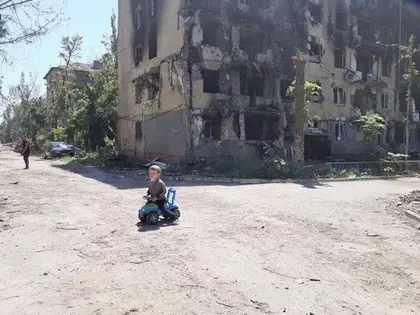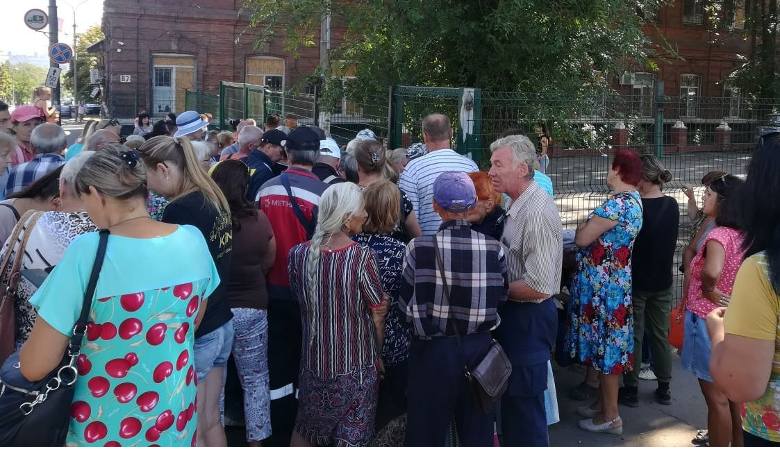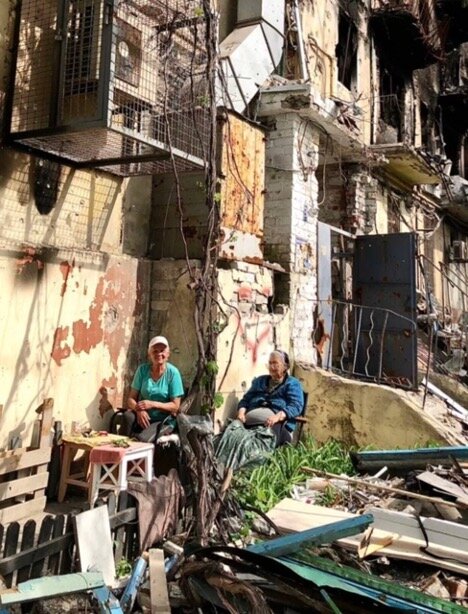Since May 20, Mariupol has been occupied by Russian troops – but some information about the extremely difficult conditions in the city is reaching the outside world.
Currently, around 150,000 residents continue to live in Mariupol.
JOIN US ON TELEGRAM
Follow our coverage of the war on the @Kyivpost_official.
Ukrainian authorities have created a particular online chatbot where residents in occupied Mariupol can report anonymously about the situation in the city. The Mayor of Mariupol’s adviser, Petro Andryshchenko, also reports on conditions there.
Life in the city resembles scenes from a post-apocalyptic movie. There are shortages of electricity, drinking water, and food. Many buildings have been bombed by the Russian army and there are burial grounds everywhere, even in children’s playgrounds.
Mariupol’s Filtration Camps
There are four large filtration camps in the city, where thousands of men are kept and then mobilized to the front.
Citizens who wish to leave Mariupol must also first go through filtration. Huge queues form at filtration points as well as at humanitarian aid hand-out stations.
People are expected to work for food.
According to messages written by locals on the chatbot, the Russian occupiers are planning to organize a pseudo-referendum. They are considering the issue of renaming Mariupol to Zhdanov.
There are very long lines to get through the filtration process. A certificate of filtration is a mandatory condition for moving around the city relatively safely. It is also the main document required to obtain an exit pass. There are also very long queues to get permission to leave the city.

Massive Christmas Day Attack by Russia, Ukraine Reports
People whose homes have been destroyed are forced to live in the open and most of the population continues to live in dangerously unsanitary conditions – garbage not being cleared and a lack of running water.
For the partial resettlement of citizens of Mariupol that have lost their homes due to Russian shelling, the occupiers are building concrete barracks without heating or other utilities.
Insufficient Food and Water
Wages and pensions that the occupiers initially paid to citizens of Mariupol were insufficient to cover basic needs.
Humanitarian aid is the primary source of food for most of the population. However, the occupiers recently announced the end of regular deliveries of humanitarian aid and this decision has caused the queues at temporary humanitarian aid points to grow even longer, further endangering the health of all and especially the more vulnerable sections of the city’s population.
The availability of drinking water in Mariupol remains a serious issue. The Russian occupiers are providing residents with water collected from rivers and lakes which is unfit for human consumption and threatens to cause the spread of infectious diseases, in particular, dysentery.
The Death Rate Among Civilians Increases
The death rate in Mariupol continues to rise. During the past week, 36 residents of Mariupol died in one emergency hospital. At least 20 percent of all patients die in Mariupol’s hospitals. Before the war, the mortality rate in the city’s hospitals was 5 percent at worst.
Despite the terrible living conditions experienced by Ukrainians living under the Russian occupation in Mariupol, some hope that Mariupol will be liberated from the Russian occupation remains in the city.
During the fight for Mariupol, which lasted from February 24 to May 20, politician-collaborators aided the invaders to create a humanitarian disaster in the city. From the first days of the invasion, the occupiers targeted the city’s essential infrastructure destroying utility systems, warehouses with food and medicine, mobile operator towers, power lines, pumping stations, and the main water pipeline from a reserve reservoir were all destroyed.
Many civilians found themselves trapped and unable to leave the city.
According to Ukrainian authorities, at least 22,000 civilians have died during the first three months of the war.
You can also highlight the text and press Ctrl + Enter








